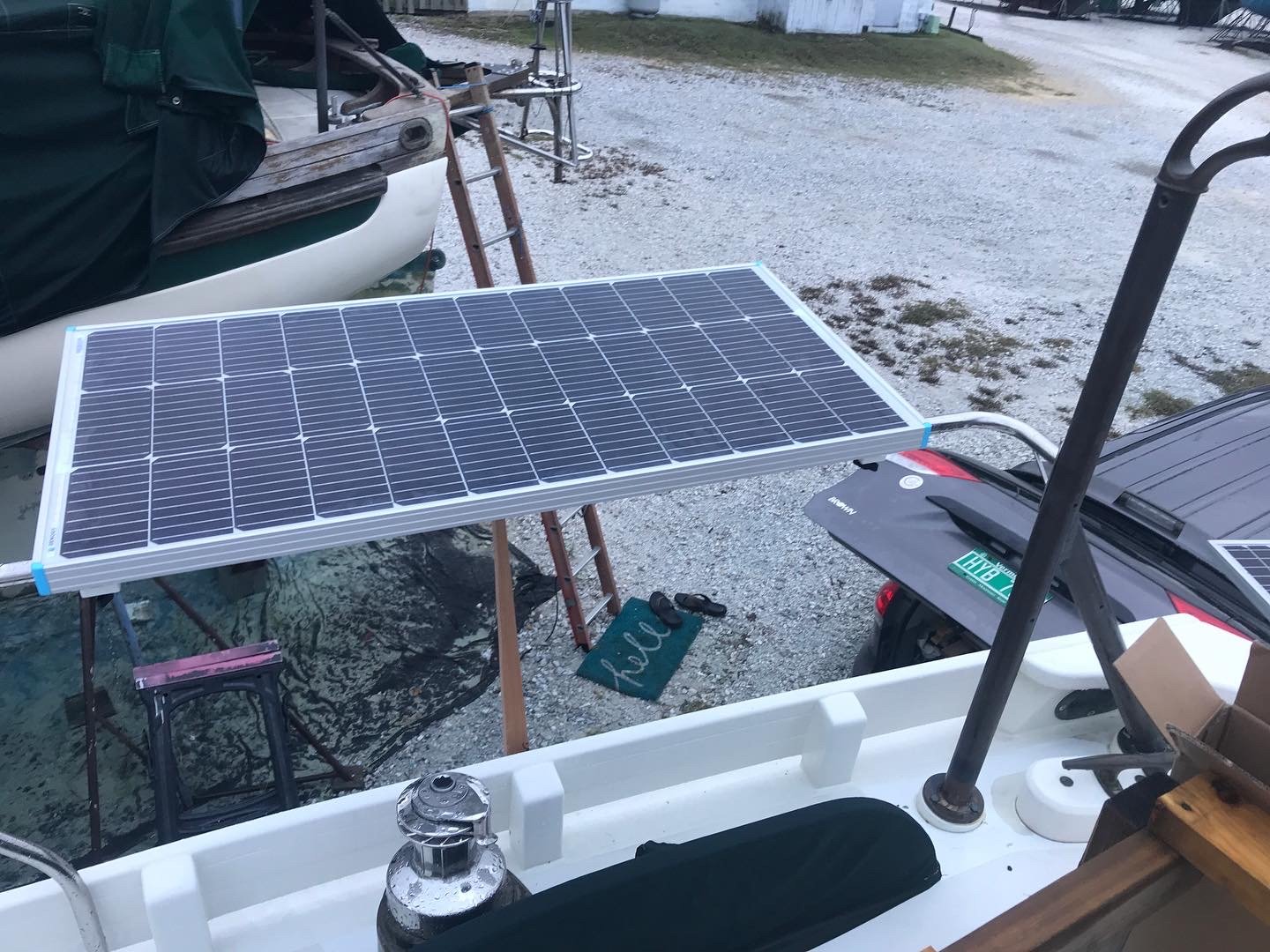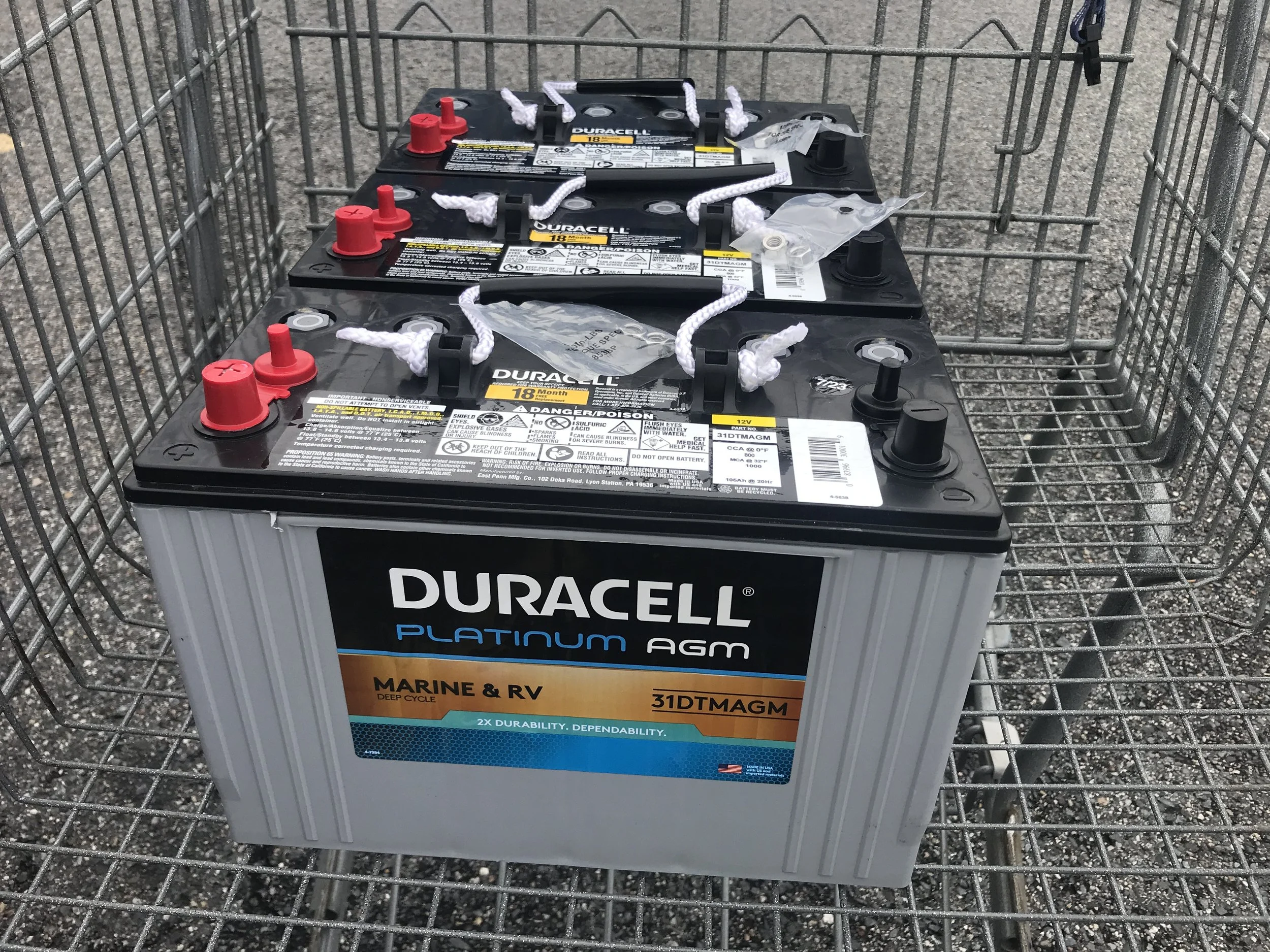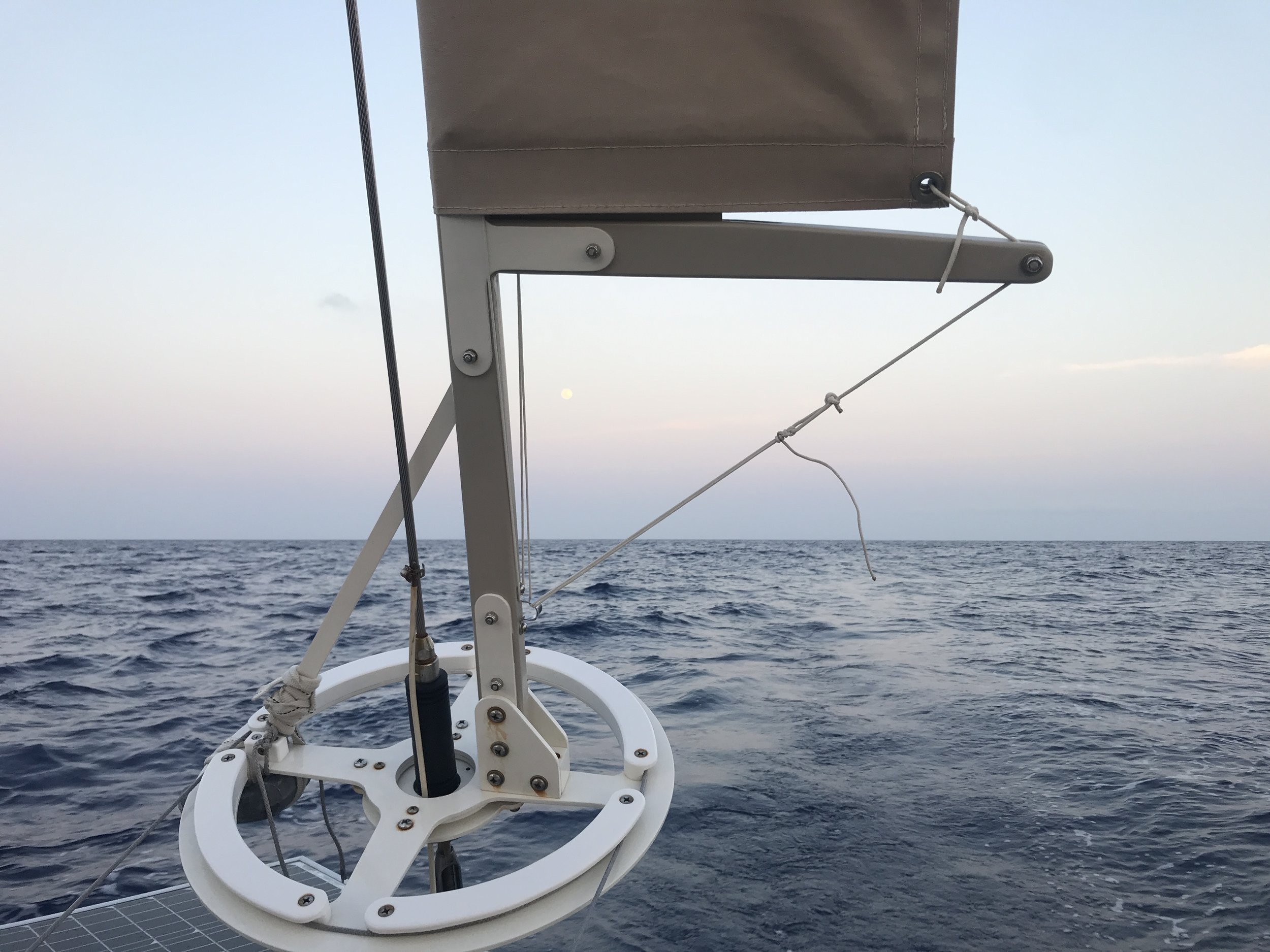Balance of Power
This isn’t a political post. Or a conversation about who’s in charge on the boat - that would be Jeremy - but anything food-related is totally my domain.
No, it’s a conversation about electricity on board.
Power up, baby!
“I was thinking of getting one of those space heaters to use on board. What do you think?” A boatyard neighbor asked a couple of weeks ago, right when the weather was turning cold. We pointed out that a space heater uses a LOT of electricity, and if she was talking about using it away from the dock, she first needed to figure out whether they could power it.
A space heater, right?
Land life doesn’t generally involve any of these kinds of considerations. Electricity is something we take for granted. It’s in the walls, available by plugging into the wall outlet or flipping a switch. On a boat, though, you’re responsible for both the generation and the storage of said electricity; understanding that part of the equation is key to understanding just what you might be able to use in terms of appliances.
There are a couple of ways to look at this whole equation. You could look at your battery bank and your charging options, come up with a daily “electricity availability number”, and tweak your usage and toys to stay under that.
You could also start by figuring out how much power you’d like to have available. Want a fridge and a freezer? Hot water for showers? Starlink? An Instant Pot? All of these (and so much more) all require some electricity. Take those numbers and come up with an “electricity needed number” to decide how big a battery bank you need and how you’ll charge it.
Mischief’s batteries.
For many of us, the reality is a mix of these two. There are some non-negotiable items that require electricity, a few “would be nice” items, and a limited amount of space/budget for batteries and charging options. You’ve got to find the sweet spot!
On Calypso and Mischief, we refuse to run the diesel engine solely to fill batteries and so rely on alternative sources for routine charging. Therefore, the size of our power plant is largely limited by space available for solar panels. (The length of the boom makes a permanently-installed wind generator a more complicated solution; we don’t like the aesthetics of those on a Bristol Channel Cutter anyway.) Calypso’s 200 AH Lithium house bank offers 180 amp hours of usable power while Mischief’s, 300 AH AGMs, gives us 150 usable AH, both powered by 400 watts of solar. If we want more power than this, we’ll have to figure out more space for batteries as well as how to fill them. (We do carry a small generator for emergency use - it never came out of the locker in the Caribbean and if the same holds true for the Bahamas this winter we’ll retire it from service.)
This windvane steers us with the power of the wind
One of the fastest ways to doom a cruise, in my opinion, is to overlook the importance of the balance of power. Figuring out honestly what your “MUST HAVEs” are, size the power plant to at least meet those, and if there’s additional power available then add some extras.
For us, refrigeration, the water maker, and navigation equipment are critical, plus lights and fans for down below. We’ve added a few luxuries that can be used as power is available - things like our bread machine, electric blanket, and electric kettle, but if we have a few less sunny days that don’t fully charge the batteries, those are the first things not to be used. I’m jonesing for a freezer but we won’t install one until we’re sure the power plant can support it.
Cozy bed!
It’s a fun exercise, for us anyway, to keep all of this information in our heads and balanced. There are many cruisers, most with larger boats, who prefer to not think about the power equation. They’ve got enough battery space and charging capacity that pretty much anything goes.
Our “space heater” friends are mostly in this latter camp. They have a huge solar array powering a large battery bank, and the space they have aboard allows for some leeway. They did wind up buying a space heater for their late fall jaunt down the ICW. figuring that between the solar and the incessant engine use that’s a requirement to go down the ditch, they’d be just fine.
Until one morning when they woke up in Coinjock with batteries down to 15%. Turns out the alternator wasn’t charging the batteries as expected, and the sun hasn’t exactly been shining. The alternator has been shipped off for repair. The space heater? Relegated to an unused corner of a hard-to-access locker. By the time the alternator catches up with them, they should be far enough south not to need it anymore.
Sometimes the balance of power gets tipped in an unwelcome direction.





